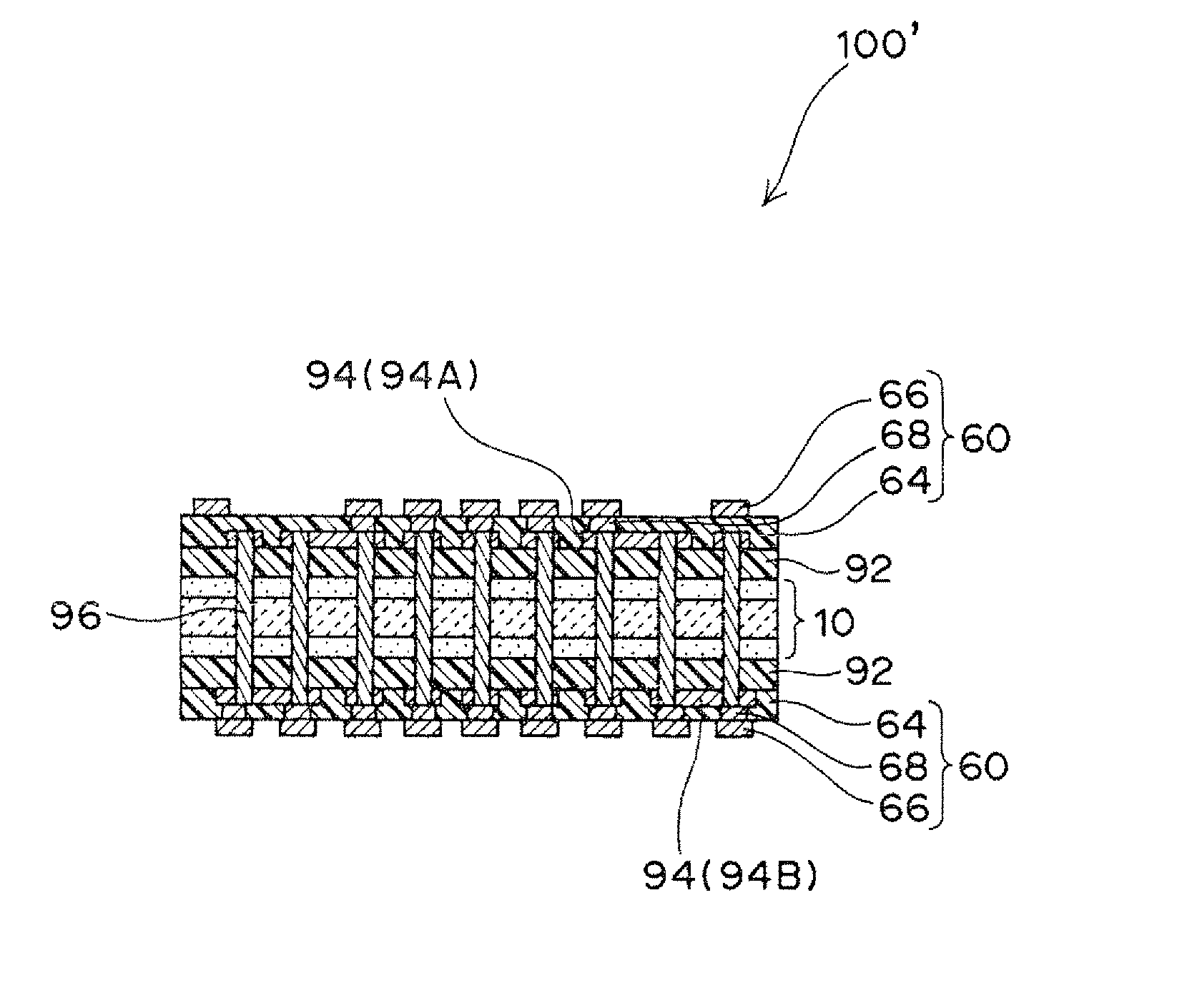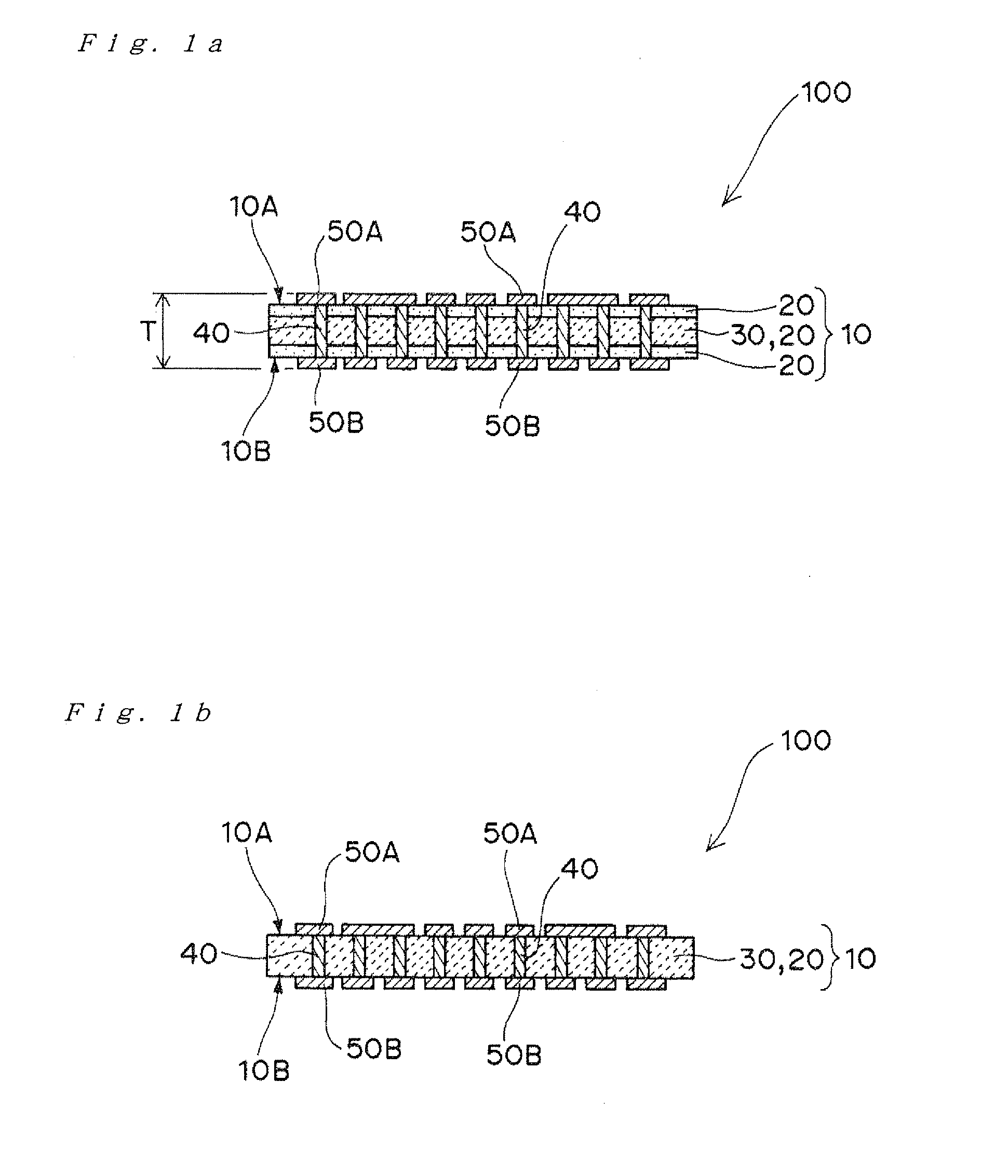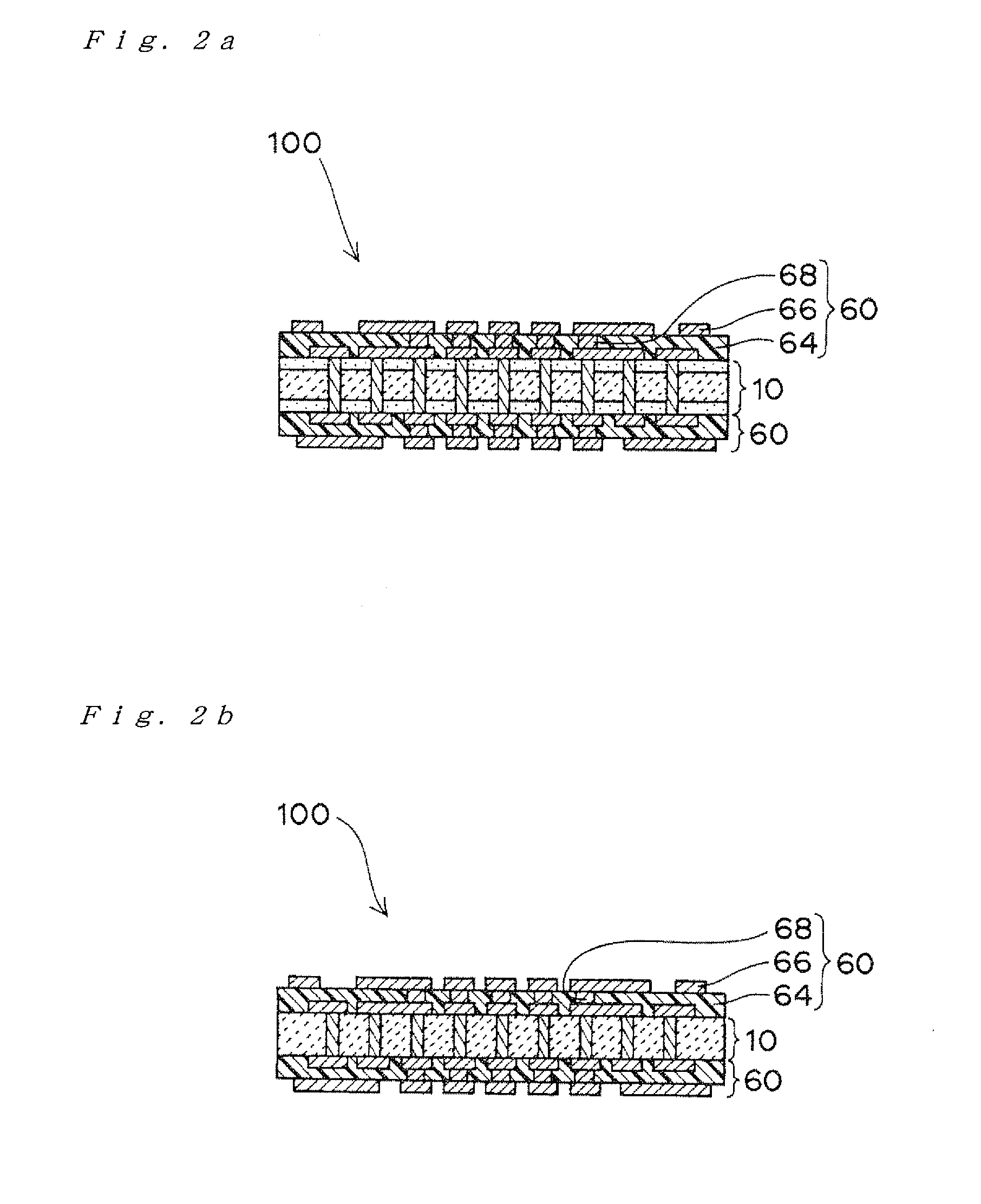Hybrid substrate, method for manufacturing the same, and semiconductor integrated circuit package
a manufacturing method and hybrid technology, applied in the direction of resistive material coating, printed circuit simultaneous processing, solid-state devices, etc., can solve the problems of hard to sintered ceramic substrates in cases with large sizes, solder connections can come off substrates, and the mounting of semiconductor integrated circuits (i.e., lsi) on packaged circuit boards, etc., to achieve effective absorbing stress, reduce the size of the substrate as a whole, and reduce the effect of shrinkag
- Summary
- Abstract
- Description
- Claims
- Application Information
AI Technical Summary
Benefits of technology
Problems solved by technology
Method used
Image
Examples
first embodiment
[0064]A hybrid substrate 100 of the present invention comprises, as illustrated in FIGS. 1(a) and 1(b), a glass-ceramic sintered body 20 and a glass woven cloth 30 existing therein. The glass-ceramic sintered body 20 and the glass woven cloth 30 provide a core layer 10 of the substrate 100. Specifically, the core layer of the hybrid substrate 100 comprises the glass woven cloth 30 serving as a reinforcing material, and the “glass-ceramic sintered body 20 which at least contains a glass component and a metal oxide component” obtained by an impregnation of the glass woven cloth. Particularly according to the present invention, the glass woven cloth 30 and the glass-ceramic sintered body 20 formed by the impregnation with respect to the glass woven cloth 30 are in a form of sintering integration with each other in the core layer 10 of the hybrid substrate.
[0065]As illustrated in FIG. 1, the hybrid substrate 100 according to the first embodiment comprises a through-hole 40 passing throu...
second embodiment
[0079]The present invention makes it possible to embody the various configurations of the hybrid substrate which comprises the core layer including the glass woven cloth and the glass-ceramic sintered body integrated together by sintering. For example, the configuration of a hybrid substrate 100′ as illustrated in FIGS. 6(a) and 6(b) can be possible according to the present invention. As illustrated in FIGS. 6(a) and 6(b), the hybrid substrate 100′ comprises thermoset insulating resin layers 92 on both opposed surfaces 10A, 10B of the “core layer 10 comprising the glass woven cloth 30 and the glass-ceramic sintered body 20 existing in and / or on the glass woven cloth 30”. The thermoset insulating resin layers 92 are provided with the wiring layers 94 thereon. Further, through-hole 96 is provided so as to pass through the core layer 10 and the thermoset insulating resin layers 92 in the hybrid substrate 100′.
[0080]Even in the case of the hybrid substrate 100′ as illustrated in FIGS. 6...
PUM
| Property | Measurement | Unit |
|---|---|---|
| size | aaaaa | aaaaa |
| size | aaaaa | aaaaa |
| size | aaaaa | aaaaa |
Abstract
Description
Claims
Application Information
 Login to View More
Login to View More - R&D
- Intellectual Property
- Life Sciences
- Materials
- Tech Scout
- Unparalleled Data Quality
- Higher Quality Content
- 60% Fewer Hallucinations
Browse by: Latest US Patents, China's latest patents, Technical Efficacy Thesaurus, Application Domain, Technology Topic, Popular Technical Reports.
© 2025 PatSnap. All rights reserved.Legal|Privacy policy|Modern Slavery Act Transparency Statement|Sitemap|About US| Contact US: help@patsnap.com



